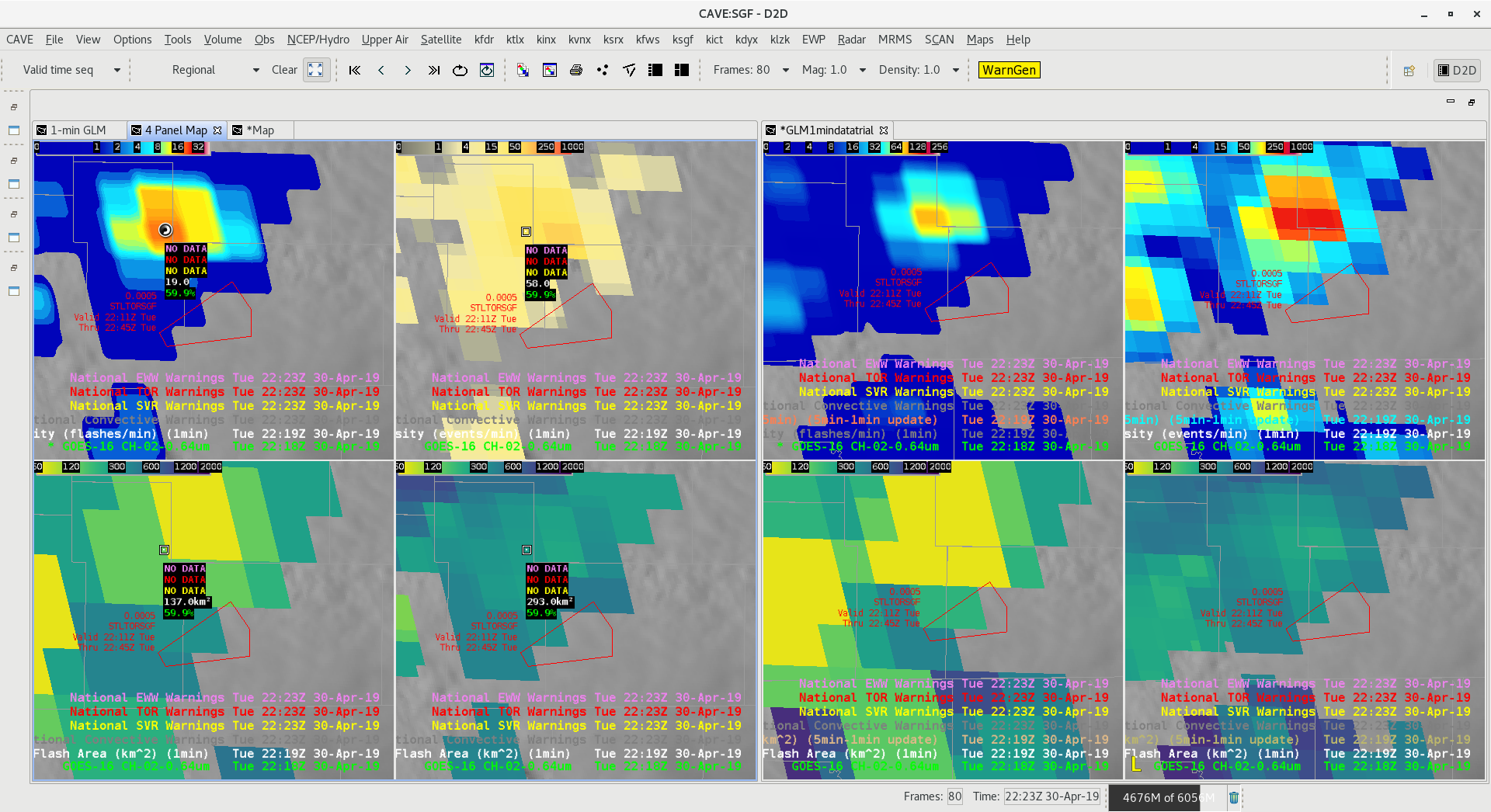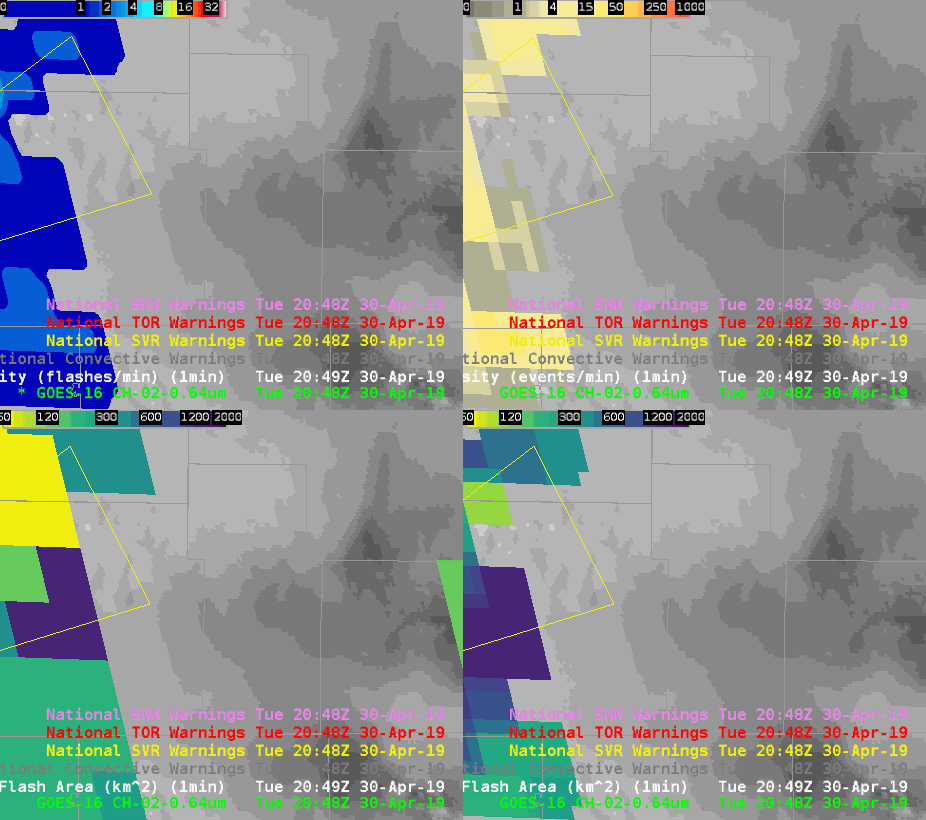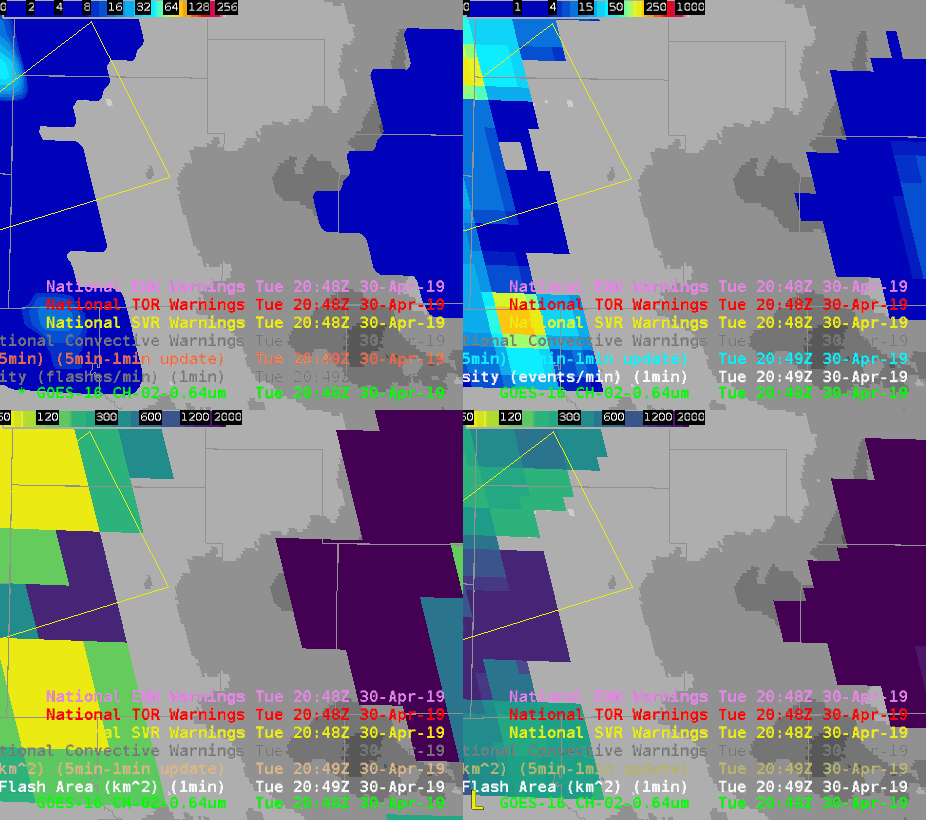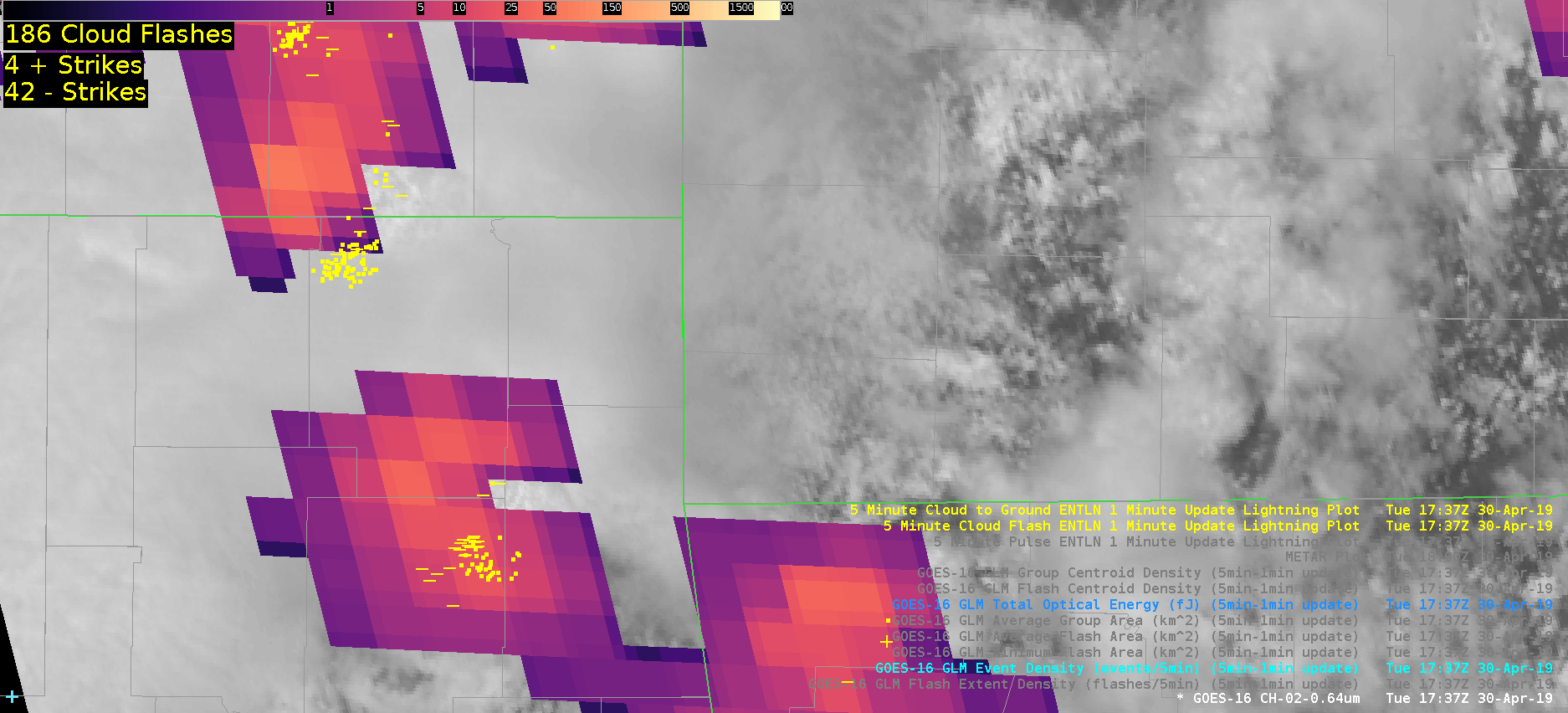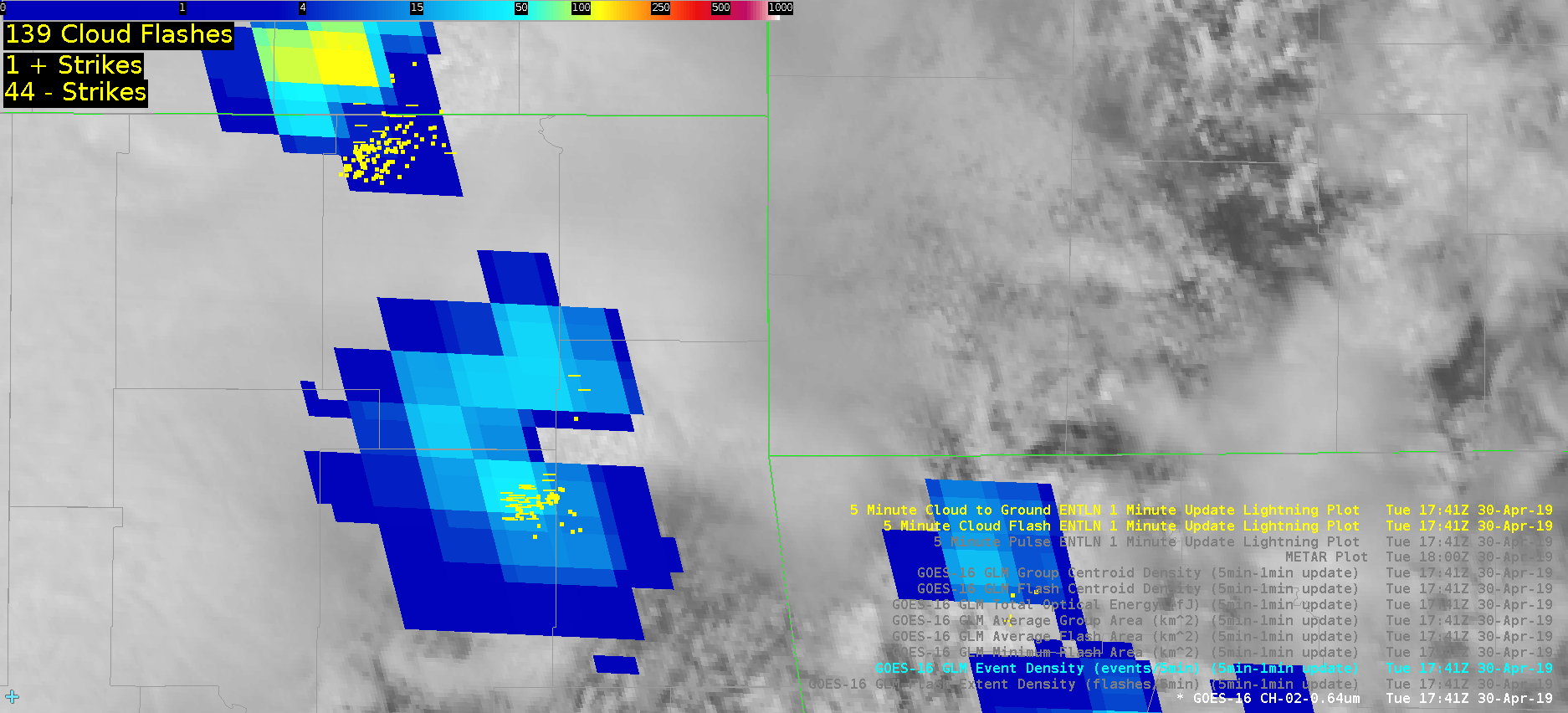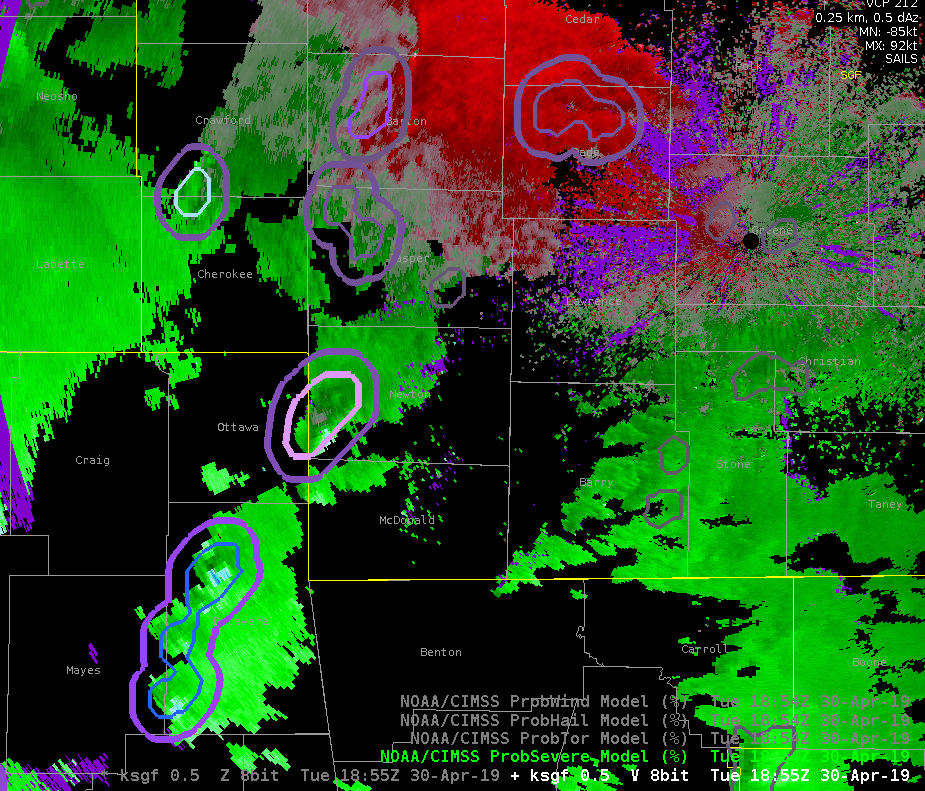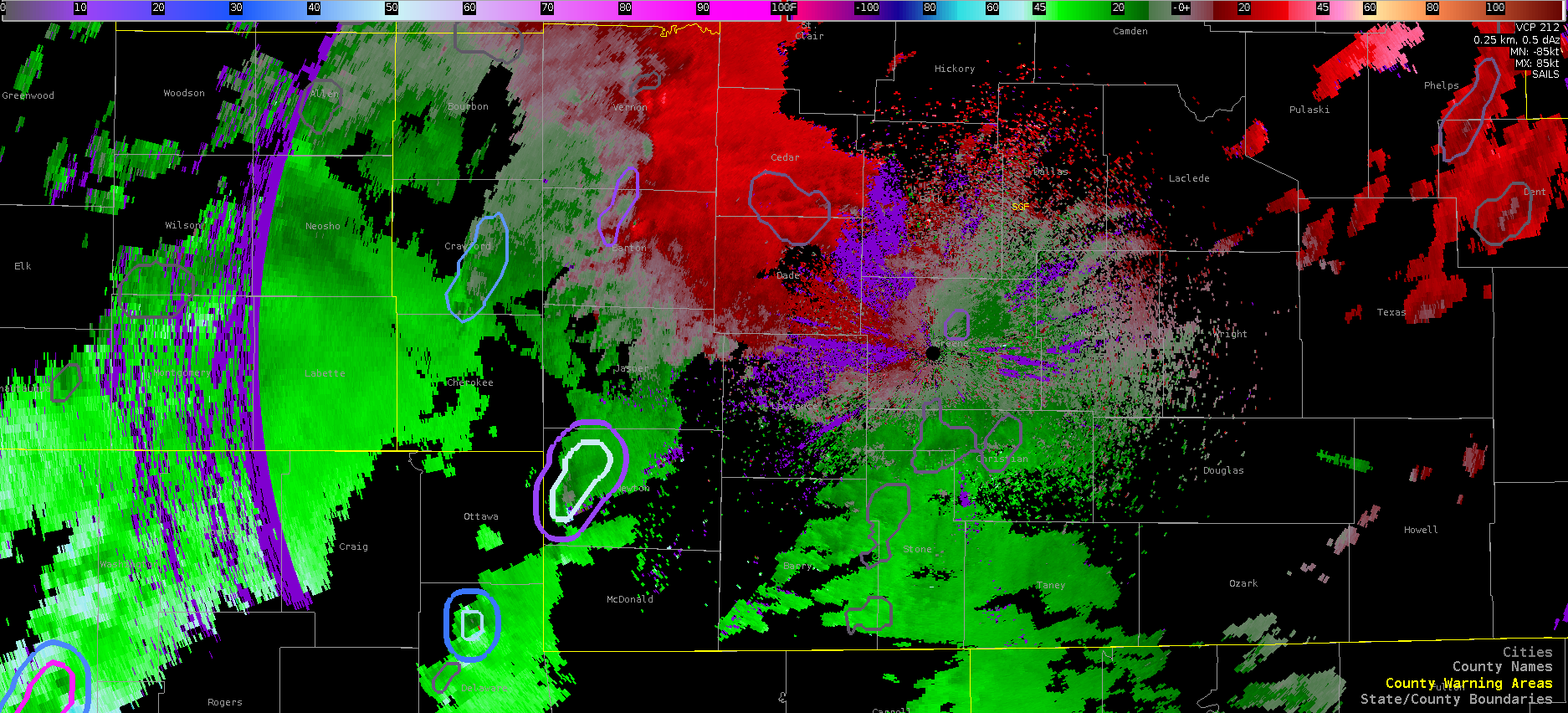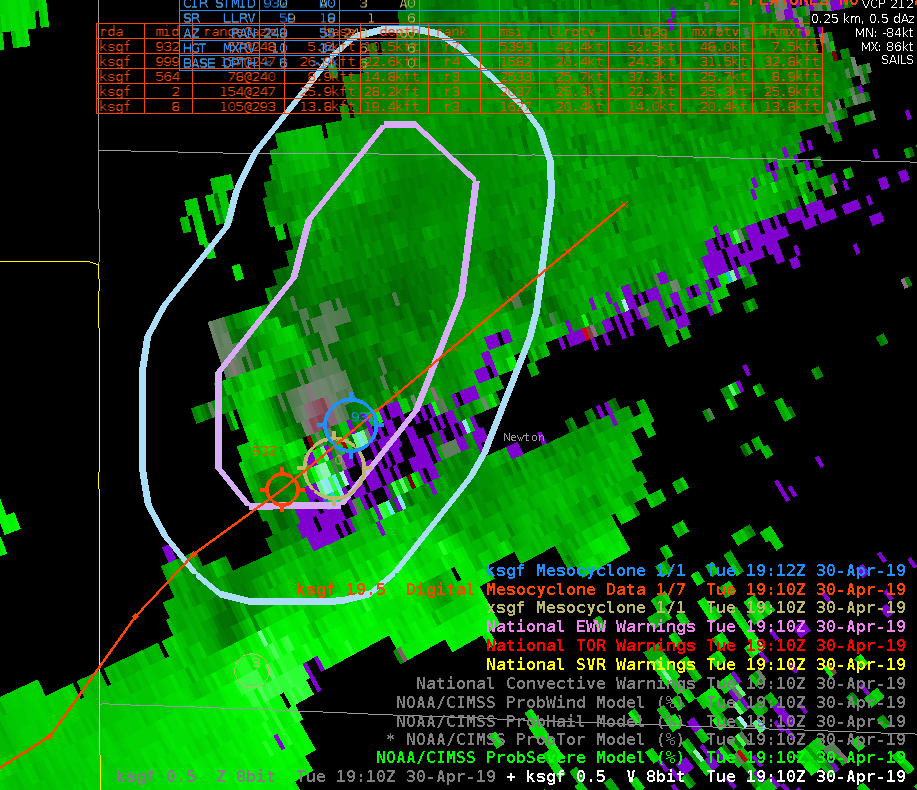Convection off the coast of Florida developed into a few organized strong to severe storms over marine zones. GLM Flash Extent Density (upper left) was far and away the most useful of the GLM products available for warning operations. The strongest storms were the most evident on this product compared to the others, and rapid lightning increases were most easily noted. This allows for quick use of the lightning data for situational awareness and setting priorities when there are numerous storms to interrogate. The other GLM products generally washed out any signal of which storms were the strongest, and didn’t provide as much information about overall storm trends.
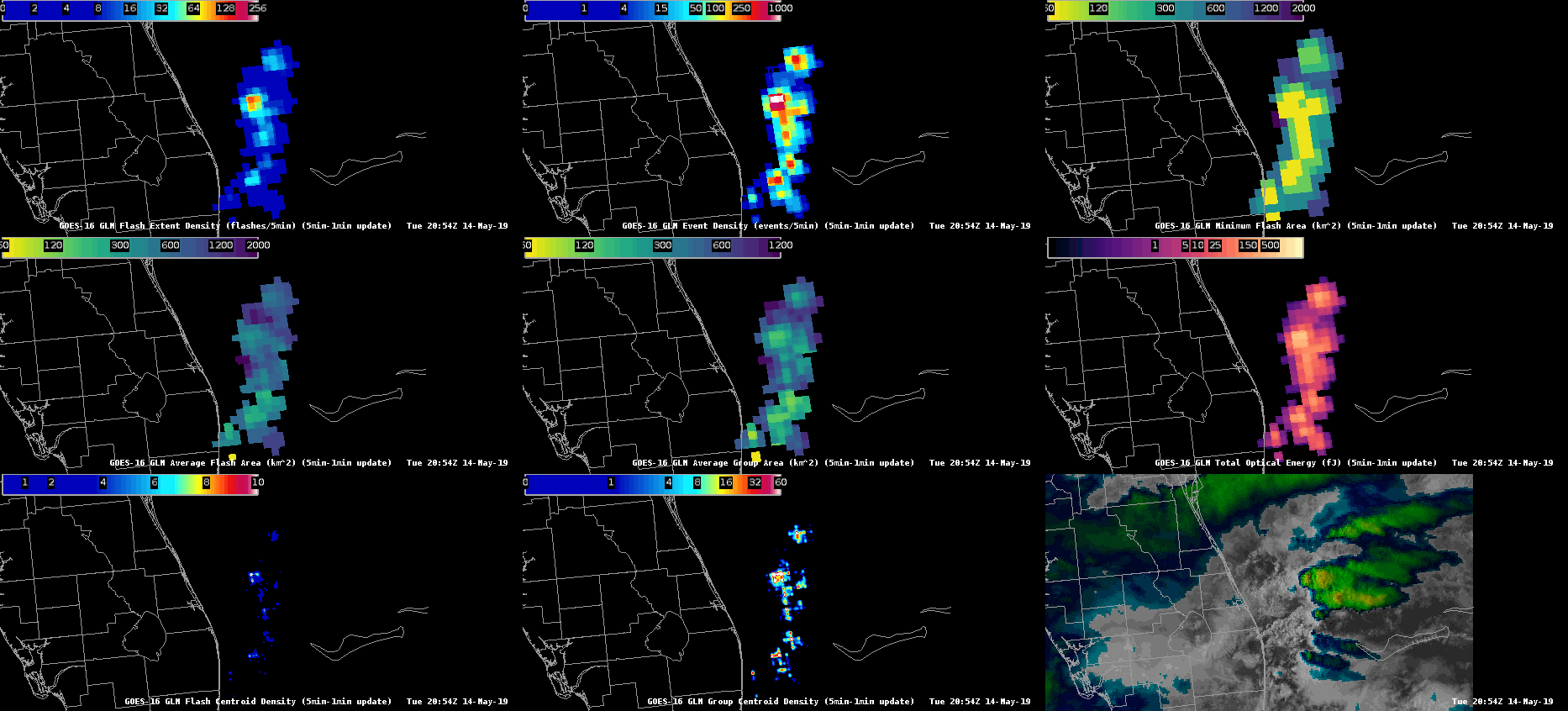
The rapid 1-minute update times that can be linked with 1-minute meso sector satellite imagery and 2-minute MRMS data can allow for more rapid warning decisions (and thus more lead time) when all considered together with base radar data.
Compared to ENTLN 1km total flash data, there wasn’t much difference in warning utility between the two products. The same information can be derived from each product in terms of storm intensity and picking out the strongest updrafts. I would give a slight edge to the ENTLN in terms of product display as the smaller grid allows for better viewing of the background satellite imagery. However, the spatial extent aspect of the GLM has advantages for public safety messaging. So overall a very even match between the two products.
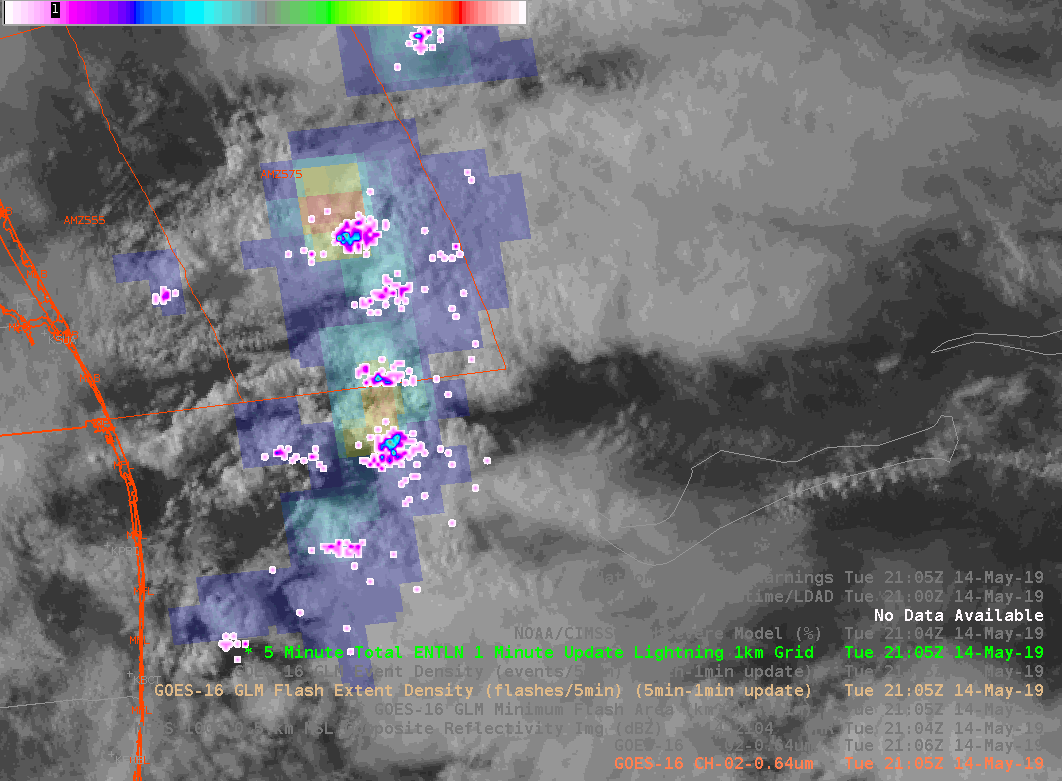
— warmbias —

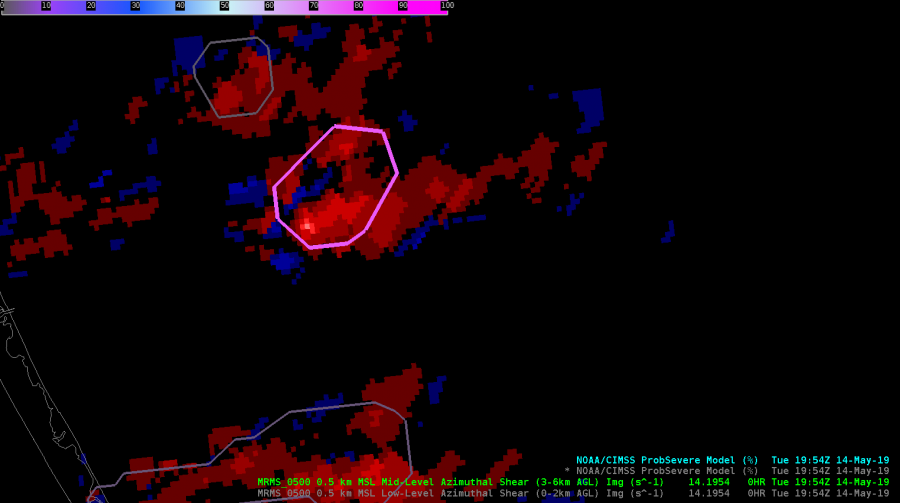

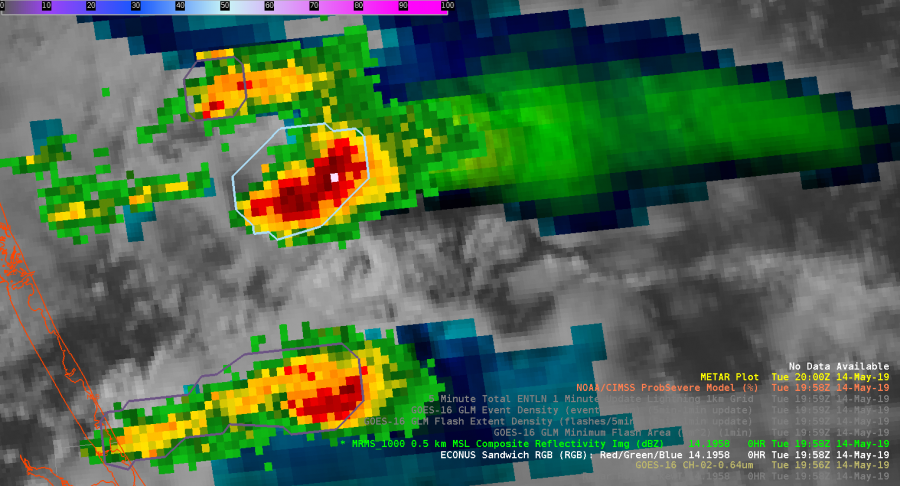
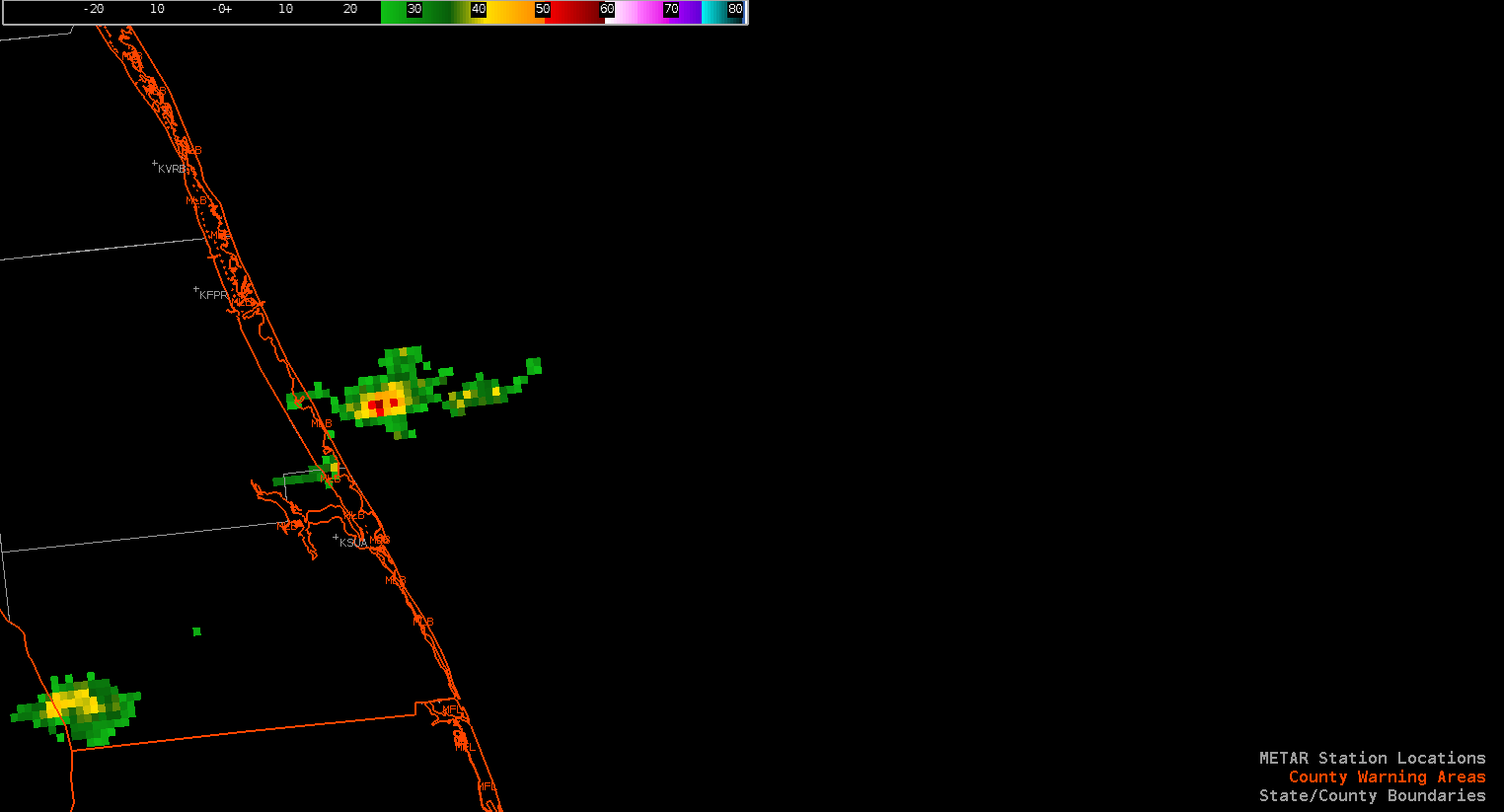
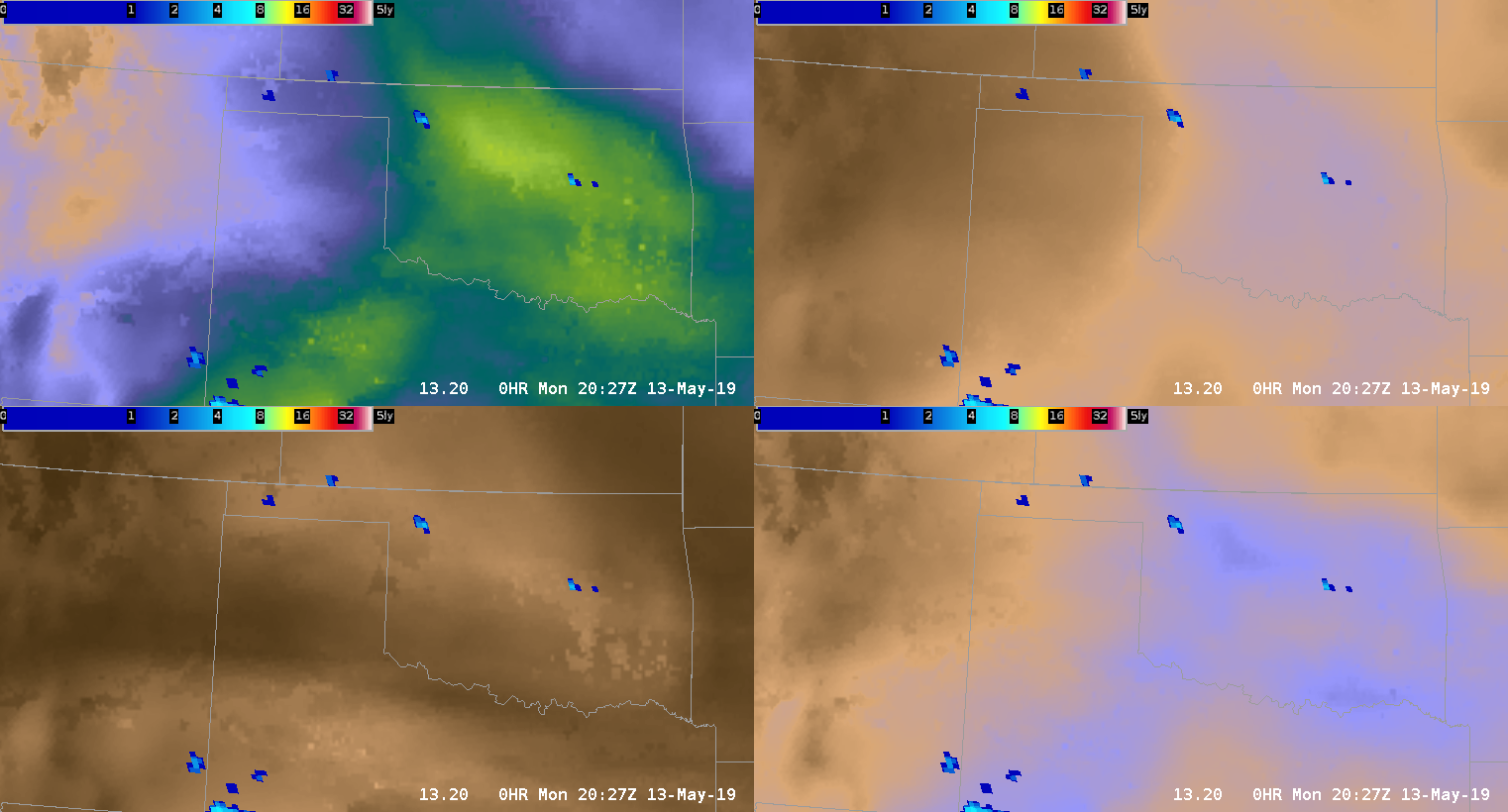
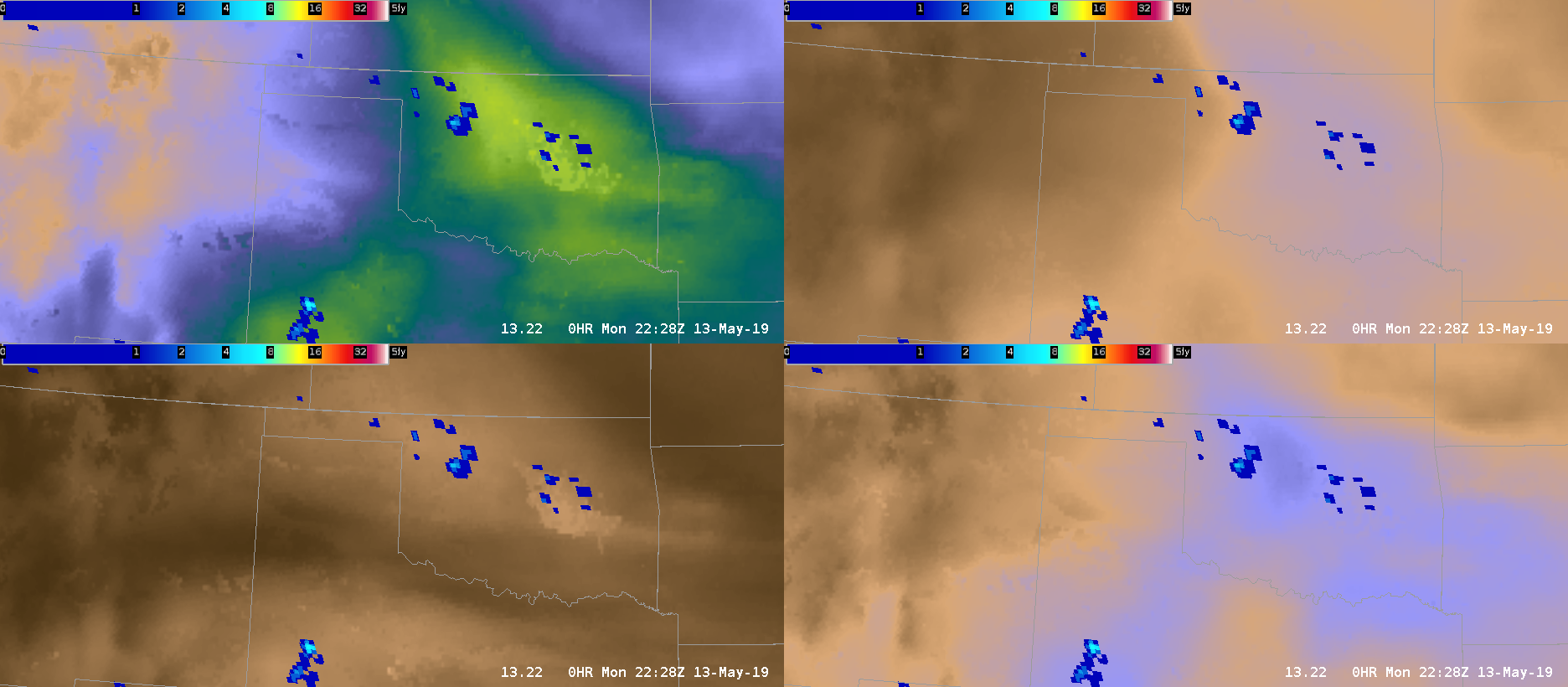
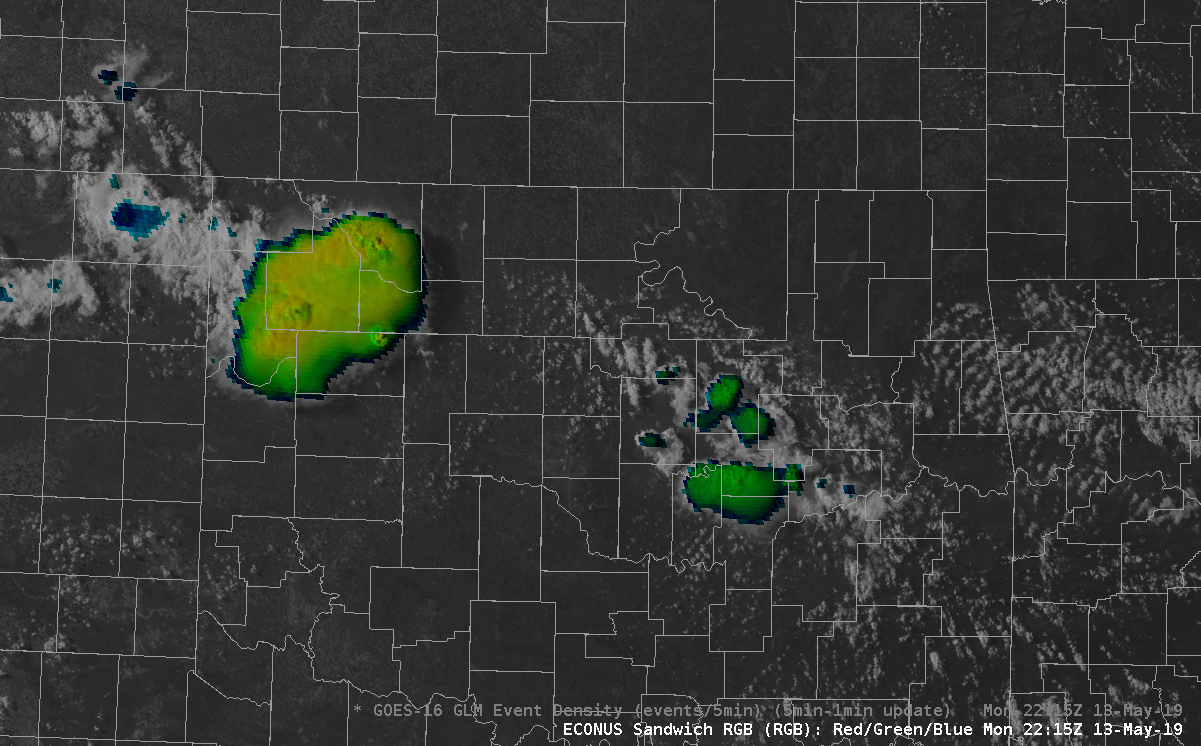
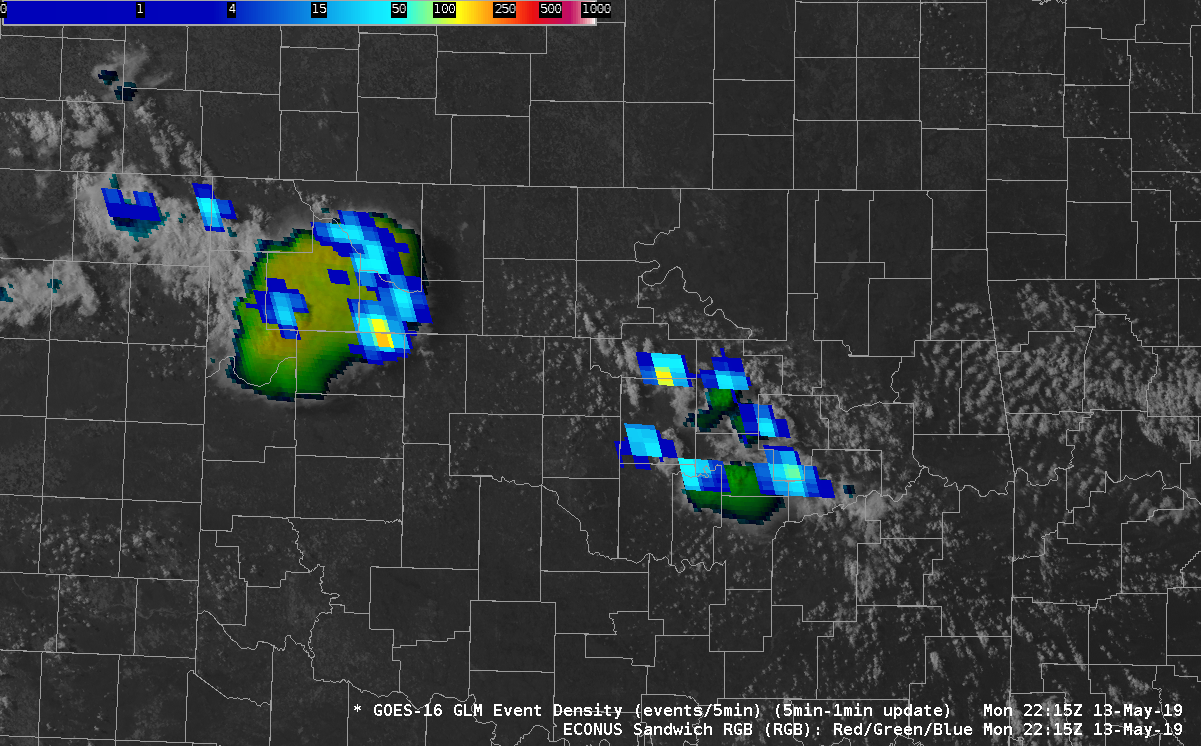 .
.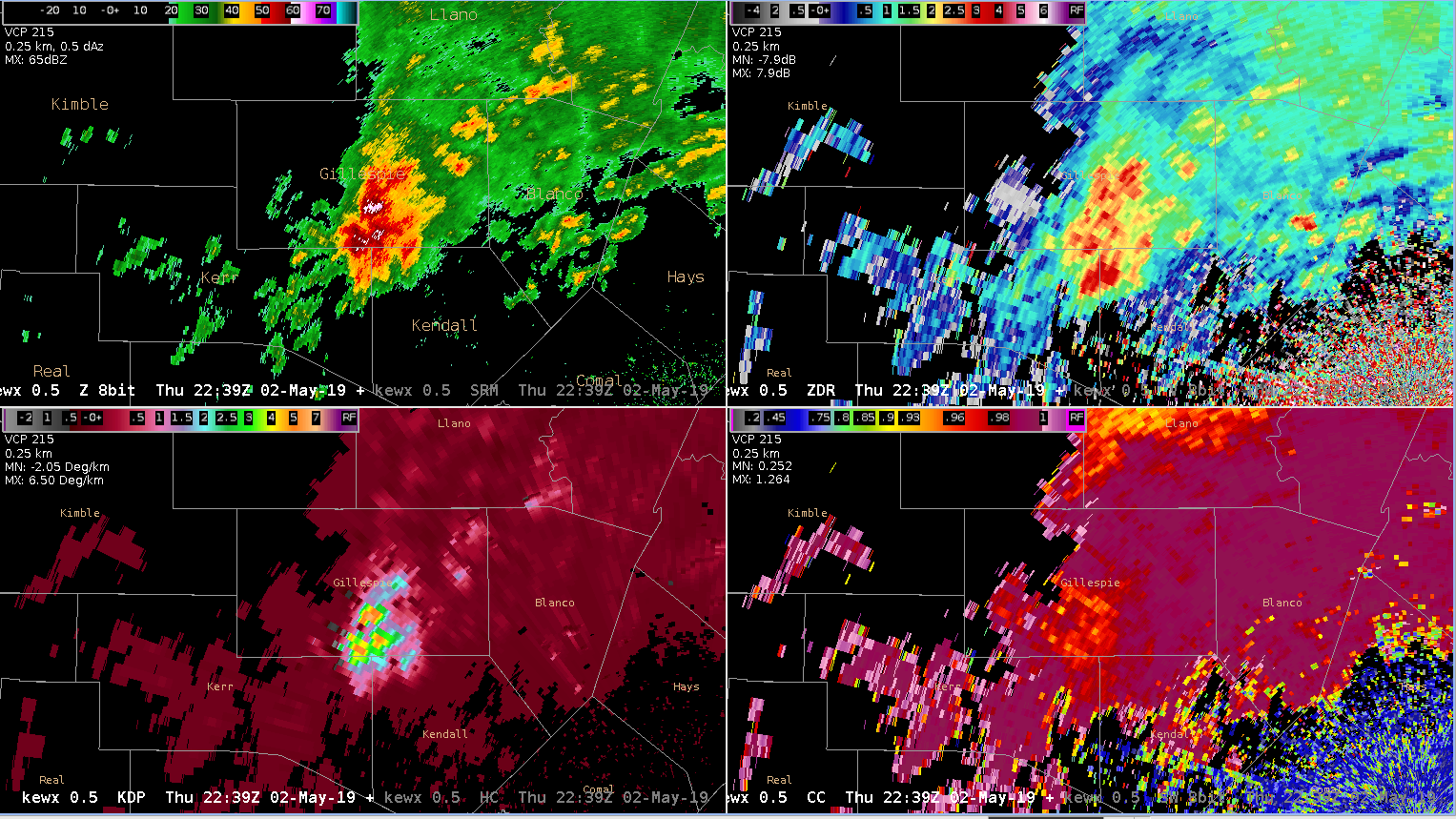
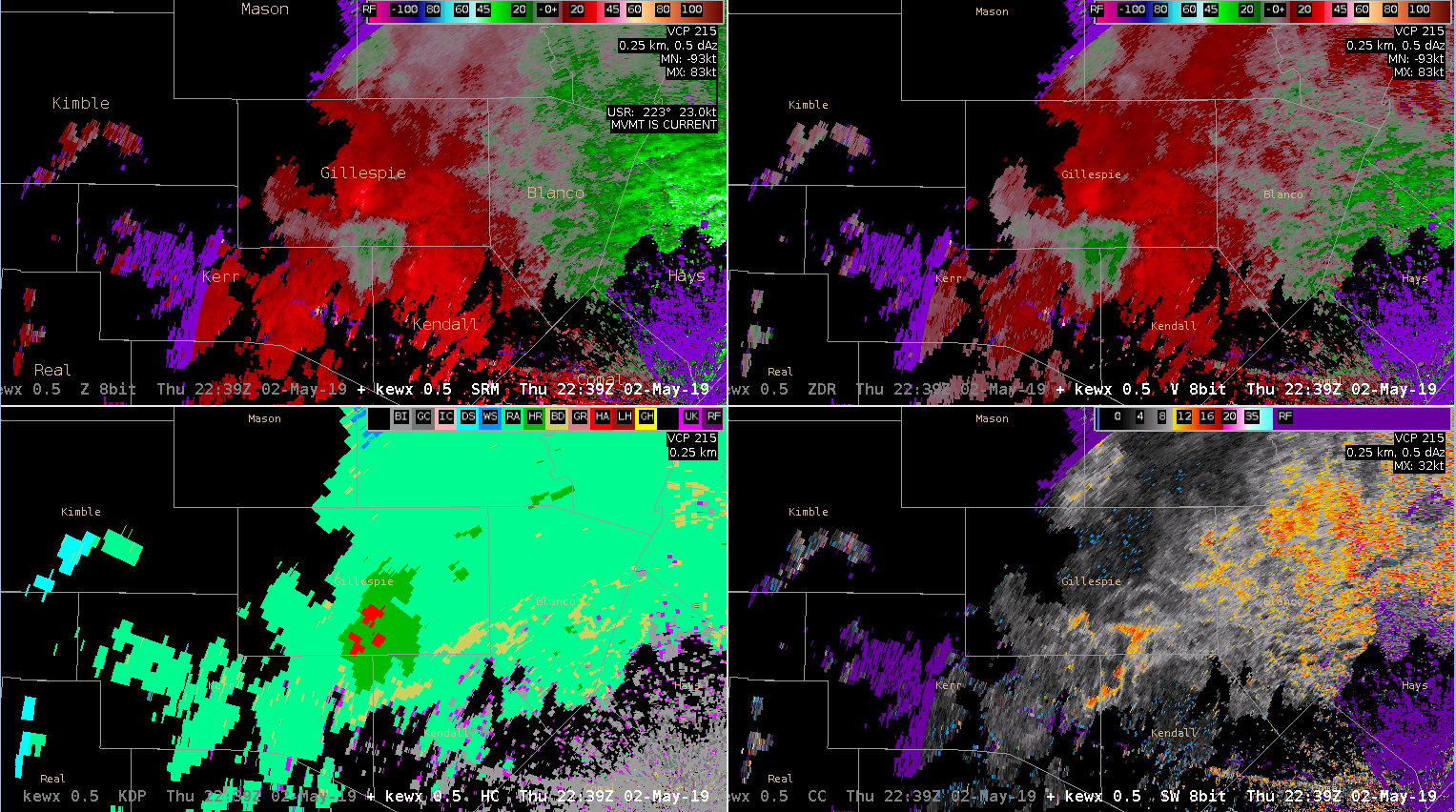
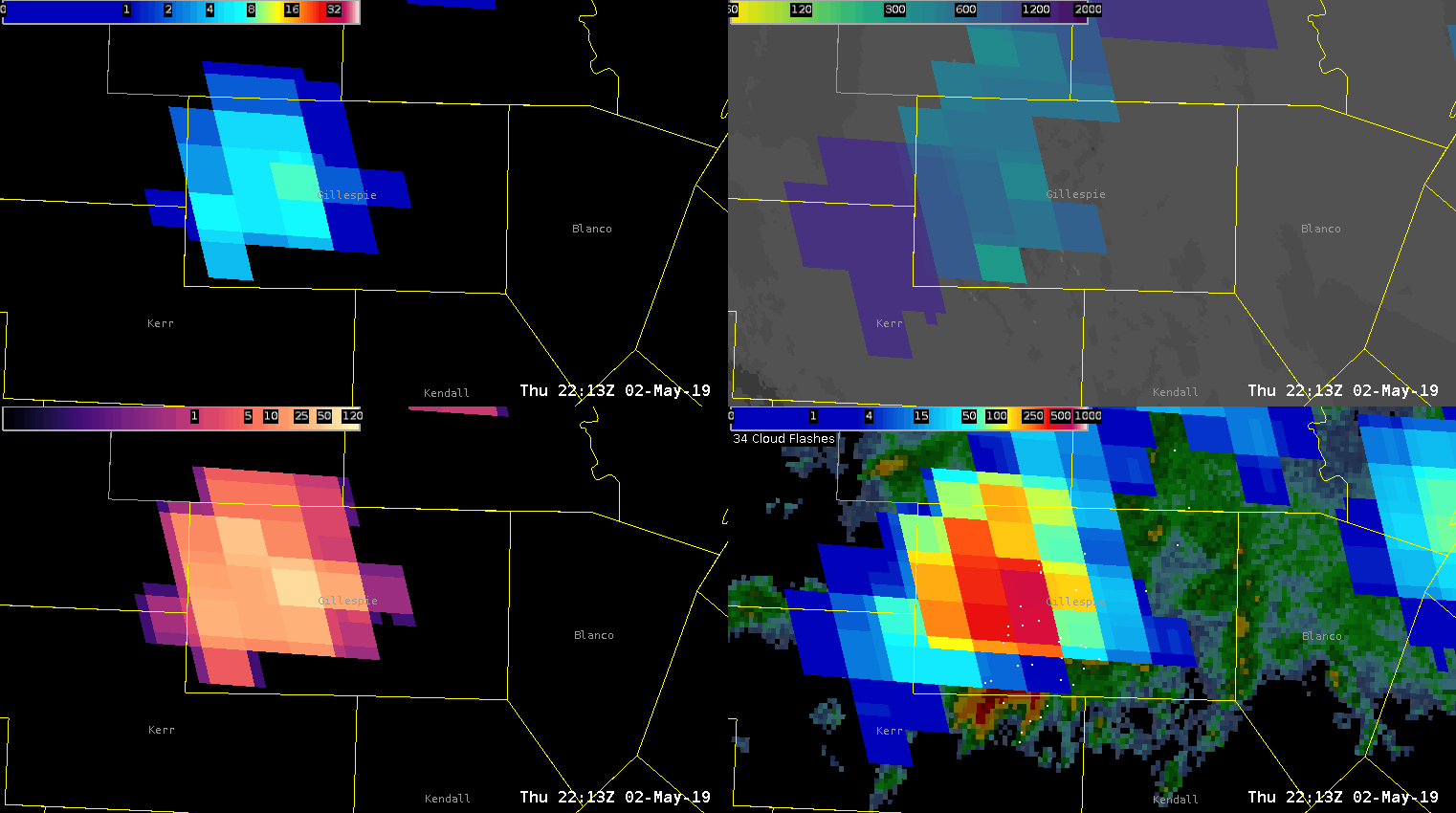
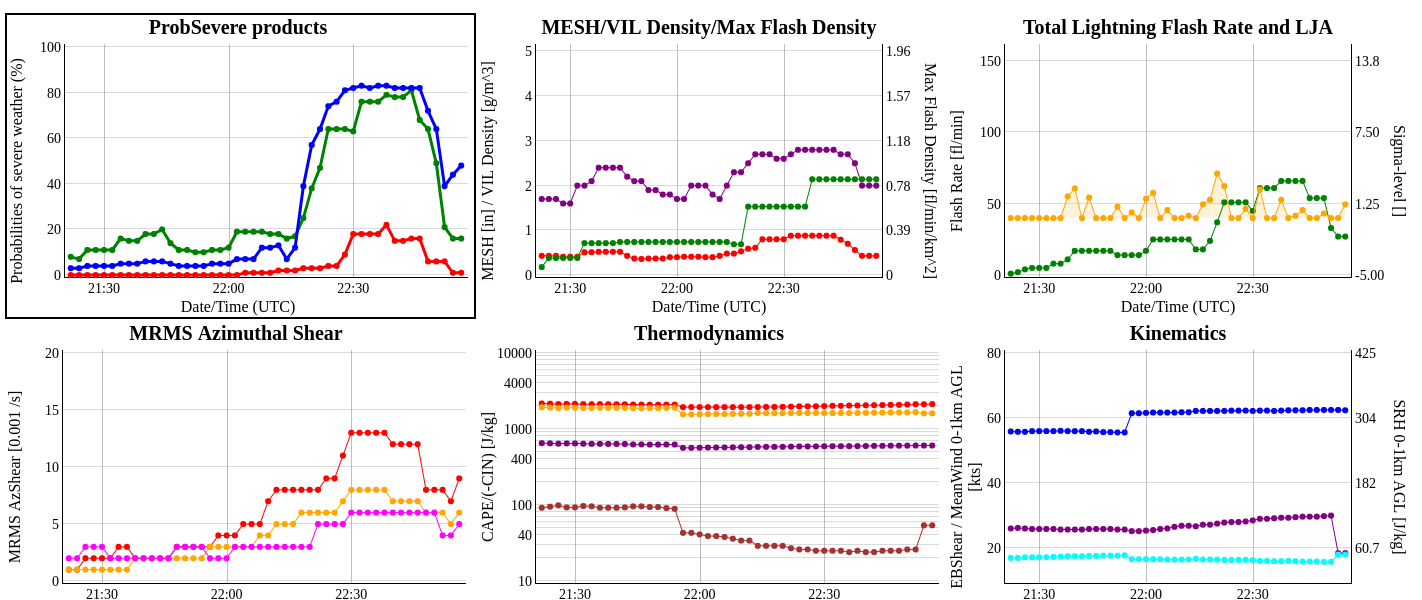
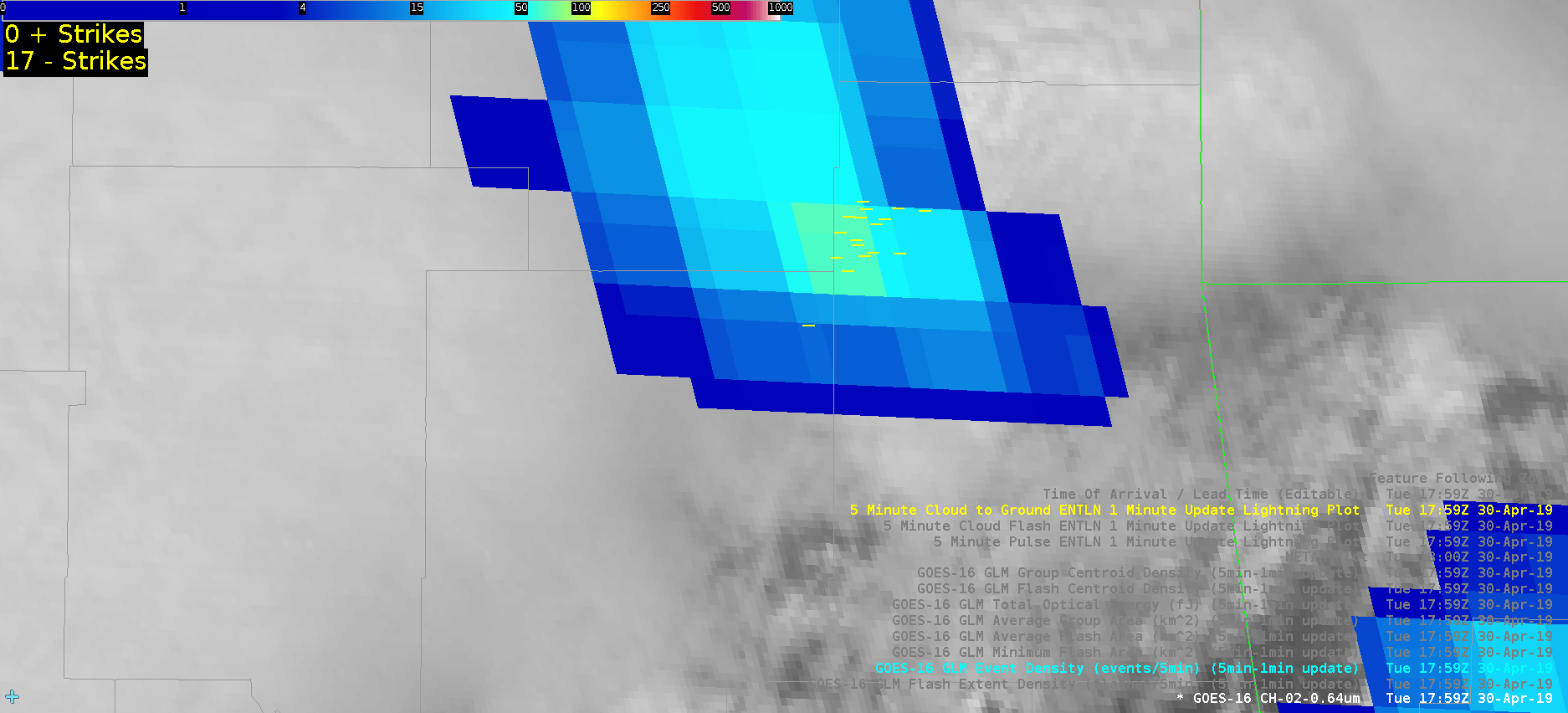

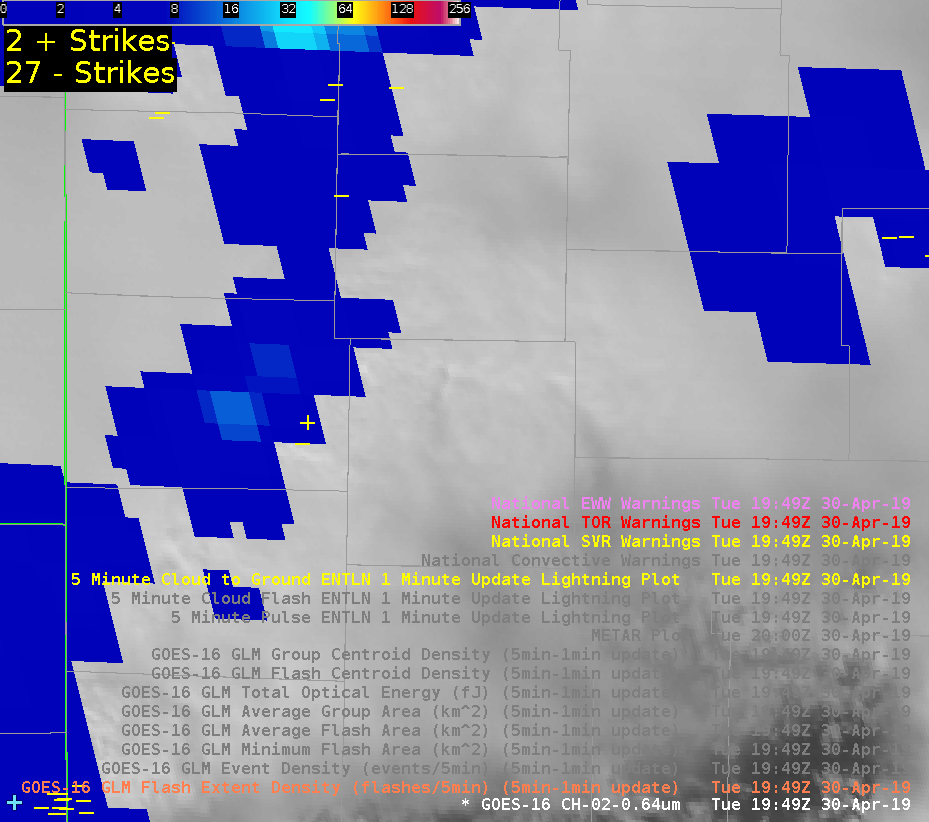
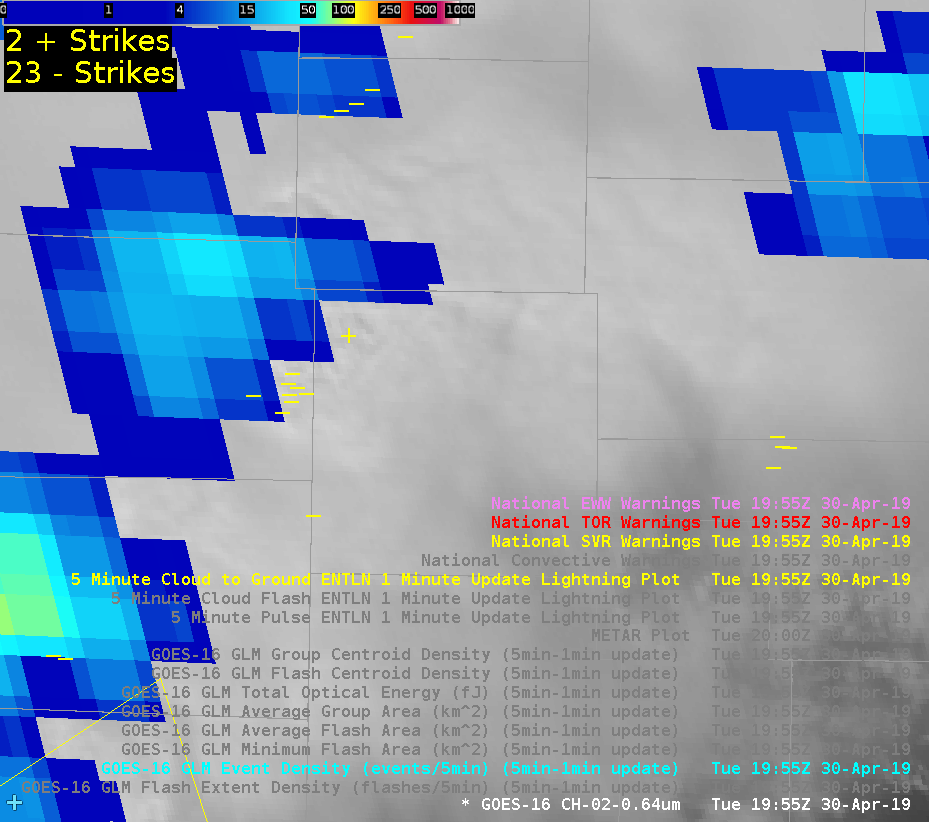 Event Density over the same cell
Event Density over the same cell Minimum Flash area showing updraft core
Minimum Flash area showing updraft core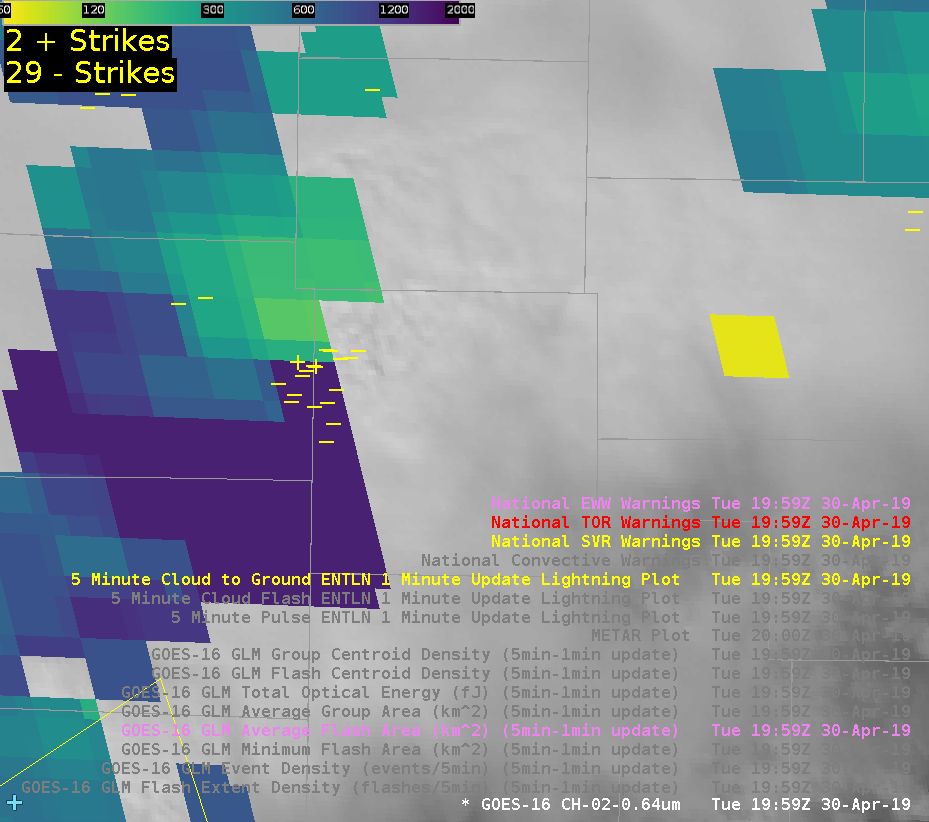
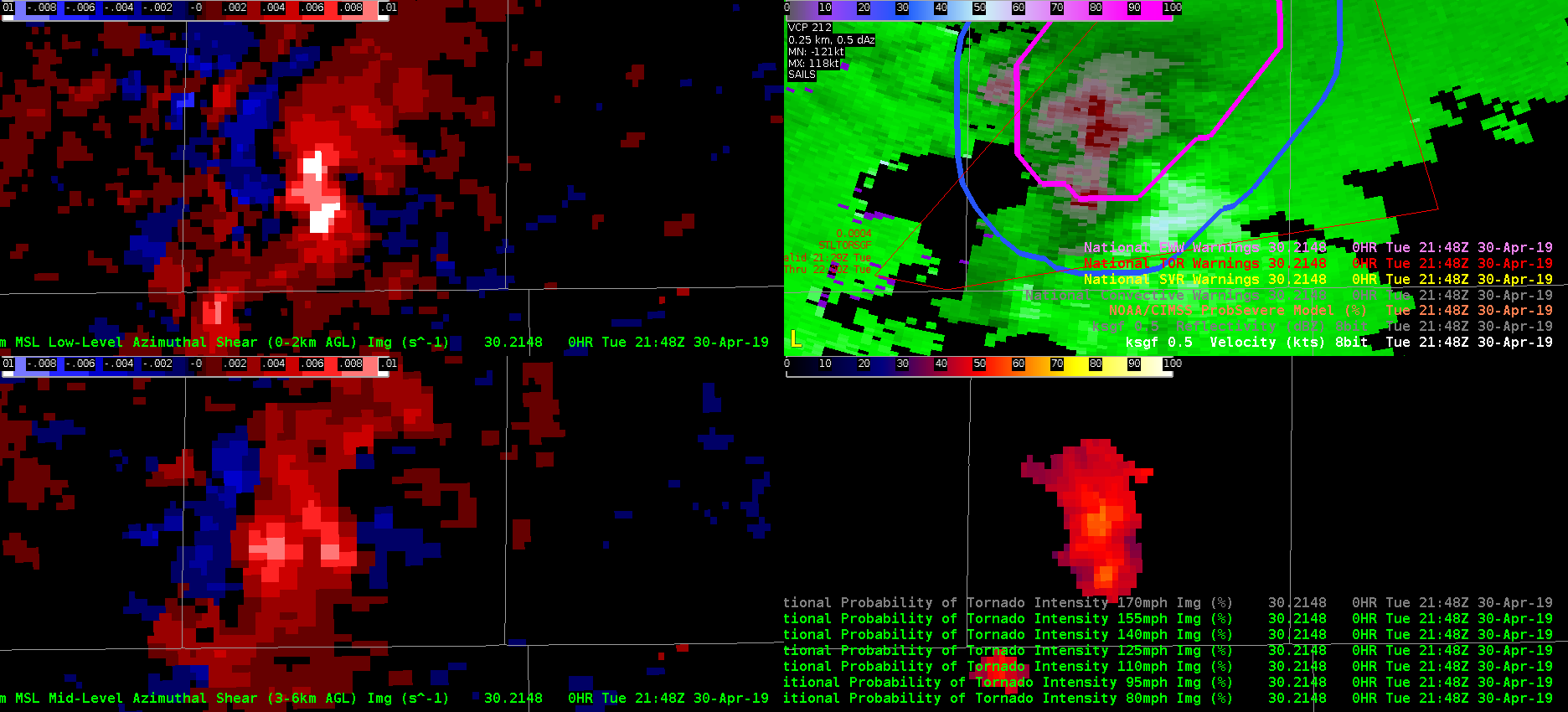 This is a case where AzShear overdid the tornadic threat This supercell had a circulation that never really tightened up. ProbSevere also vastly overestimated the tornado threat, likely due to nearby storm interactions and mergers. When convection gets messy, can we rely on these products as much?
This is a case where AzShear overdid the tornadic threat This supercell had a circulation that never really tightened up. ProbSevere also vastly overestimated the tornado threat, likely due to nearby storm interactions and mergers. When convection gets messy, can we rely on these products as much?